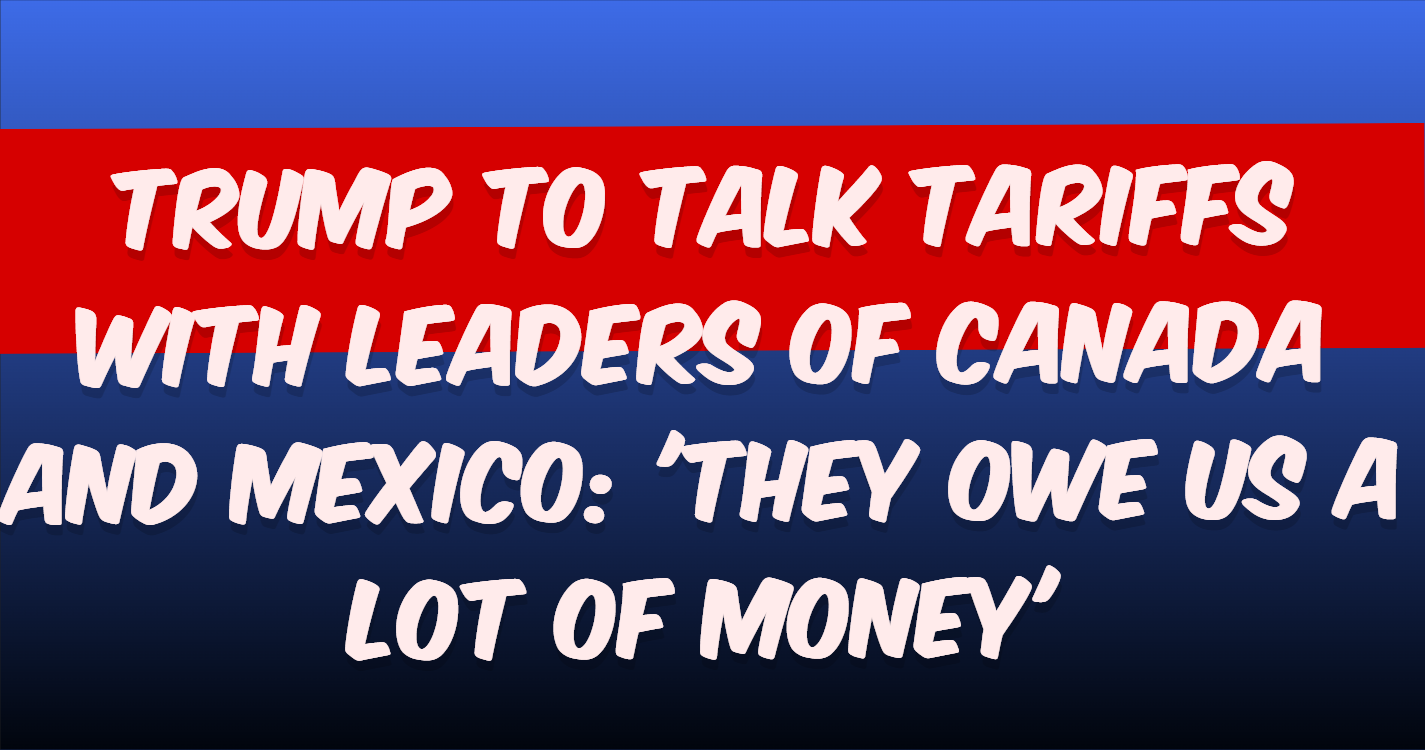In a rapidly changing global economic landscape, trade relations between countries often lead to tension and negotiations. Recently, a significant trade dispute has emerged between the United States, Canada, and Mexico. President Donald Trump has announced plans to engage in high-level talks with leaders from both countries regarding the imposition of 25% tariffs, which are set to go into effect soon. Trump has also expressed that Canada and Mexico “owe a lot of money” to the United States, underlining the importance of these discussions in resolving long-standing economic issues.
This article explores the significance of these tariffs, the reactions from Canada and Mexico, and their broader implications on North American trade relations. We will provide a simple and easy-to-understand overview and address frequently asked questions on the subject.
the Situation
President Trump’s announcement of new tariffs on goods from Canada and Mexico, two of the United States’ largest trading partners, has drawn considerable attention. These tariffs are part of Trump’s broader “America First” trade policy, which aims to strengthen U.S. industries and reduce trade deficits.
Key Points to Know:
| Key Aspect | Details |
| Tariff Amount | 25% tariffs on goods from Canada and Mexico. |
| Effective Date | The tariffs are set to go into effect on Monday, a day after Trump’s announcement. |
| Trump’s Comments | Trump stated, “They owe us a lot of money,” referring to Canada’s and Mexico’s trade balances with the U.S. |
| Canada’s Response | Prime Minister Justin Trudeau announced retaliatory tariffs of 25% on American goods. |
| Mexico’s Response | Mexican President Claudia Sheinbaum indicated the country would consider both tariff and non-tariff measures. |
| Importance | This marks a critical moment for North American trade relations and the future of NAFTA (North American Free Trade Agreement). |
The tariffs are expected to target a wide range of products, including steel, aluminum, and agricultural goods, which could affect both countries’ exports to the United States. Trump’s reasoning behind these tariffs stems from his belief that Canada and Mexico have engaged in unfair trade practices, which he feels have harmed American businesses and workers.
Why Are Tariffs a Major Issue?
Tariffs are essentially taxes or duties imposed on imported goods, making foreign products more expensive for consumers in the importing country. When one country imposes tariffs on another country’s goods, it can increase prices, disrupt supply chains, and provoke retaliatory actions. In this case, the United States has imposed tariffs on goods from Canada and Mexico, which has led both countries to push back with their own measures.
Trump’s Viewpoint:
Trump has repeatedly argued that trade with Canada and Mexico is unfair to the United States, particularly concerning trade deficits. The trade deficit refers to the difference between a country’s imports and exports. Trump believes these deficits harm American workers and businesses, and he views tariffs as a tool to pressure Canada and Mexico into renegotiating trade agreements.
Canada and Mexico’s Reaction:
Both Canada and Mexico have responded by announcing their own retaliatory tariffs on American goods. These countermeasures aim to protect their economies from the impact of U.S. tariffs and to demonstrate their opposition to what they see as unfair trade practices.
Implications for North American Trade
The trade relationship between the United States, Canada, and Mexico is crucial for the economies of all three countries. Together, they form one of the largest trading blocs in the world, with billions of dollars’ worth of goods exchanged annually. The imposition of these tariffs could have significant implications for this vital trade relationship.
Impact on Businesses and Consumers:
- Increased Costs: The 25% tariffs on goods from Canada and Mexico will likely result in higher prices for American consumers. Products such as cars, electronics, and food items may become more expensive due to the added costs of the tariffs.
- Job Losses: Industries that rely heavily on imports from Canada and Mexico may experience job losses as businesses struggle to cope with the higher costs or seek alternative suppliers for their goods.
- Retaliatory Tariffs: As Canada and Mexico impose their own tariffs on U.S. products, American businesses, particularly in industries like agriculture and manufacturing, could face decreased demand for their goods in these countries.
Looking Ahead: Negotiations and Possible Outcomes
President Trump has stated that he plans to speak with Canadian Prime Minister Justin Trudeau and Mexican President Claudia Sheinbaum about the tariffs. The aim of these talks will likely be to come to an agreement or resolution regarding the trade imbalances that Trump has criticized.
Possible Outcomes of These Discussions:
- Revised Trade Deals: There may be efforts to renegotiate terms of trade agreements like the United States-Mexico-Canada Agreement (USMCA), which replaced the older NAFTA agreement.
- Compromise on Tariffs: Trump may be open to adjusting or removing the tariffs if Canada and Mexico are willing to make concessions that benefit the U.S. economy.
- Continued Retaliation: If no compromise is reached, it is possible that both Canada and Mexico will continue to retaliate with further tariffs, leading to an escalation of the trade conflict.

